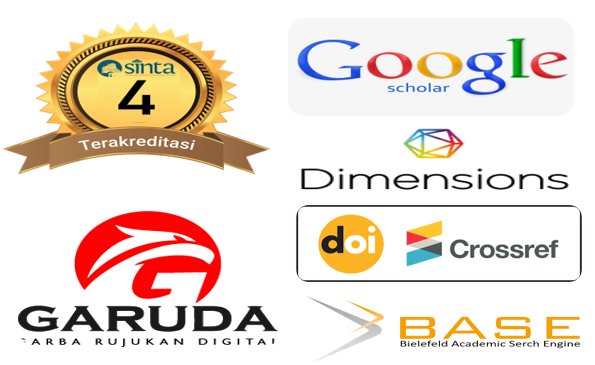The Use of Digital Storytelling (DST) to Help Students in Learning Multimodal Writing
Abstract
Keywords
References
Abas, Imelda Hermilinda & Aziz, Noor Hashima Abd (2016). Indonesian EFL Students‟ Perspective on Writing Process: A Pilot Study. (2016). Advances In Language And Literary Studies, 7(3). doi:10.7575/aiac.alls.v.7n.3p.21
Bezemer, J., Kress, G. (2010). Multimodality, Learning and Communication. London: Routledge. Bezemer, Jeff & Kress, Gunther. (2008). Writing in Multimodal Texts: A Social Semiotic Account of Designs for Learning. Written Communication - WRIT COMM U N . 2 5 . 1 6 6 - 1 9 5. 10.1177/0741088307313177.
Blikstad-Balas, M., Roe, A., & Klette, K. (2018). Opportunities to Write: An Exploration of Student Writing During Language Arts Lessons in Norwegian Lower Secondary Classrooms. Written Communicat i o n, 3 5 ( 2 ) , 1 1 9 - 1 5 4 . d o i : 10.1177/0741088317751123
Christine Joy Edwards-Groves (2011) The multimodal writing process: changing practices in contemporary classrooms, Language and Education, 25:1, 49-64, DOI:10.1080/09500782.2010.523468 Eliza Bobek 1 and Barbara Tversky2 Creating visual explanations improves learning. https://www.ncbi.nlm.nih.gov/ pmc/articles/PMC5256450/ Groves,
Christine Joy Edwards (2011) The multimodal writing process: changing practices in contemporary classrooms, Language and Education, 25:1, 49-64, DOI: 10.1080/09500782.2010.523468 Leksika Vol.12 No.2 – Aug 2018: 66—71 71
Howell, E., Butler, T., & Reinking, D. (2017). Integrating Multimodal Arguments Into High School Writing Instruction. Journal Of Literacy Research, 49(2), 181-209. doi: 10.1177/1086296x17700456
Howell, E; Reinking D; & Kaminski, R. (2015). Writing as creative design: Constructing multimodal arguments in a multiliteracies framework. Journal of Literacy and Technology 16 (1), 2-36
Jewitt, Carey. (2005). Multimodality, “Reading”, and “Writing” for the 21st Century. Discourse studies in the cultural politics of education. 26. 315-331. 10.1080/01596300500200011.
Kress, Multimodal Teaching and Learning: The Rhetorics of the Science Classroom, Continuum: 2001
Lambert, Joe. (2002). Digital Storytelling, Capturing Lives, Creating Community. Routledge.
Lemke, J. (1998). Multiplying meaning: Visual and verbal semiotics in scientific text. In J. R. Martin & R. Veel (Eds.), Reading science: Critical and functional perspectives on discourses of science (pp. 87– 113). London: Routledge
Mulatsih, S. (2016). Multimodal matrials in teaching genre-based writing: A way to promote: Students' multimodal literacies. Asian EFL Journal 2016(94)
Porter, B (2005). Digitales: The Art of Telling Digital Stories. Denver: Colorado, USA: Bernajean Porter Consulting Reinders, Hayo. ELTWorldOnline.com April 2 0 1 1 h t t p: / / b l o g . n us . e d u . sg / eltwo/2011/04/12/digital-storytellingin-the-foreign-language-classroom
Robin, B. R. (2012). The Educational Uses of Digital Storytelling. Retrieved from h t t p : / / d i g i t a l l i t e r a c y i n t h e c l a s s - r o o m . p b w o r k s . c o m / f / E d u c - UsesDS.pdf. Last accessed 08/12/2014.
Saidy, Christina (2018). Teaching English in the Two-Year College, Volume 45, Number 3. https://www.ncte.org/ journals/tetyc/issues/v45-3
Siegel, D. (2012). Embracing e-books: Increasing students‟ motivation to read and write [Electronic version]. Gifted Child T o d a y , 3 5 ( 2 ) , 1 3 7 - 1 4 3 . doi:10.1177/1076217511436089
Stanley, N. (2018). Digital Storytelling. The TESOL Encyclopedia Of English Lang u a g e T e a c h i n g , 1- 7 . d o i : 10.1002/9781118784235.eelt0403
Steven Fraiberg (2013) Reassembling Technical Communication: A Framework for Studying Multilingual and Multimodal Practices in Global Contexts, Technical Communication Quarterly, 22:1, 10-27, DOI: 10.1080/10572252.2013.735635
Wahleithner, Juliet Michelsen. The National Writing Project‟s Multimodal Assessment Project:Development of a framework for thinking about multimodal composing. http://dx.doi.org/10.1016/ j.compcom.2013.12.004 The TESOL Encyclopedia of English Language Teaching, First Edition. Edited by John I. Liontas (Project
DOI: 10.30595/lks.v12i2.3803
Copyright (c) 2019

This work is licensed under a Creative Commons Attribution 4.0 International License.
ISSN: 2620-4037

